A property manager from Mosman Park recently contacted Plumbing Group WA with concerns about a residential property. During heavy rainfall, water was infiltrating the bathroom wall, leading to unsightly water stains on both the bathroom ceiling and the ceiling of an adjacent walk-in robe. Plumbing Group WA promptly responded to address this issue, taking the following steps:
Comprehensive Investigation:
Upon arrival at the property, our team conducted a meticulous inspection to precisely locate and assess the extent of the water leak. We also investigated reports of staining in an adjacent room (the study) to ensure a thorough examination.
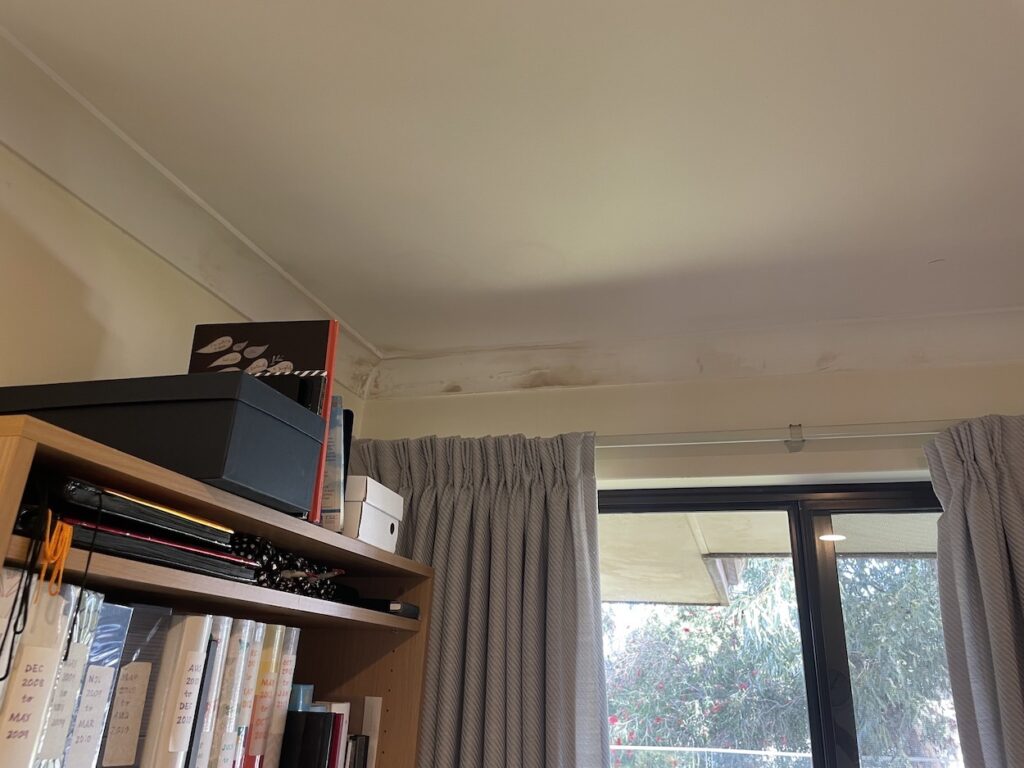
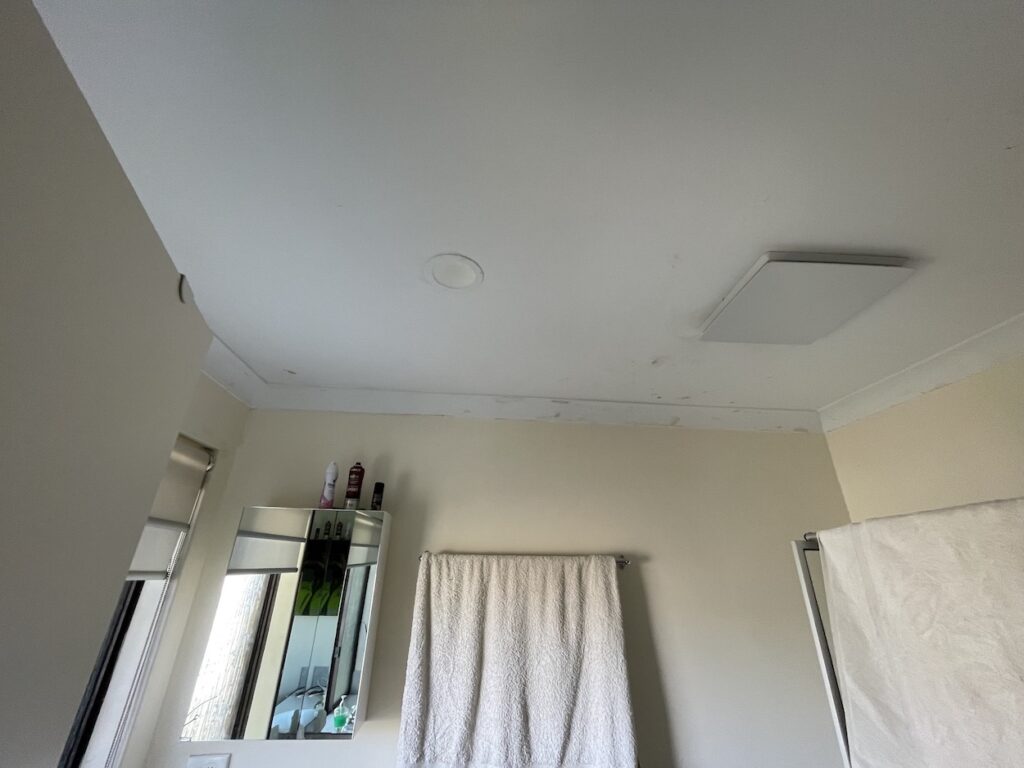
Roof Plumbing Inspection:
Our primary focus was on the roof area, where we identified a lengthy valley tray situated above the affected areas. To access this critical location, we temporarily removed all roof tiles covering the valley tray, exposing it for closer examination.
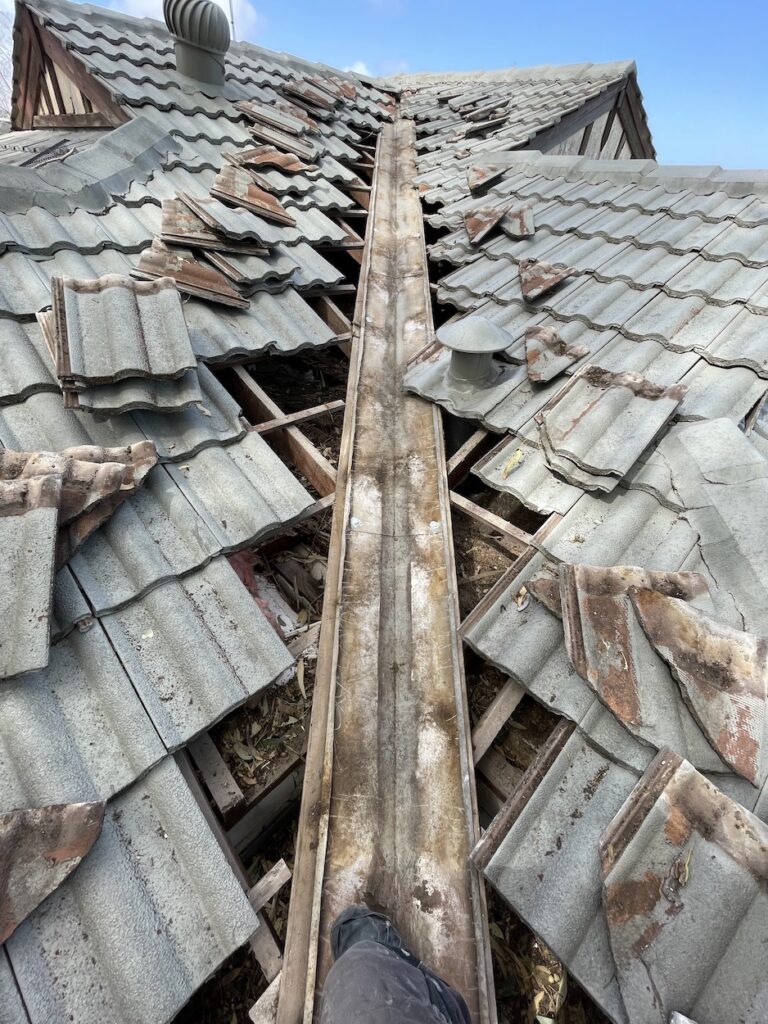
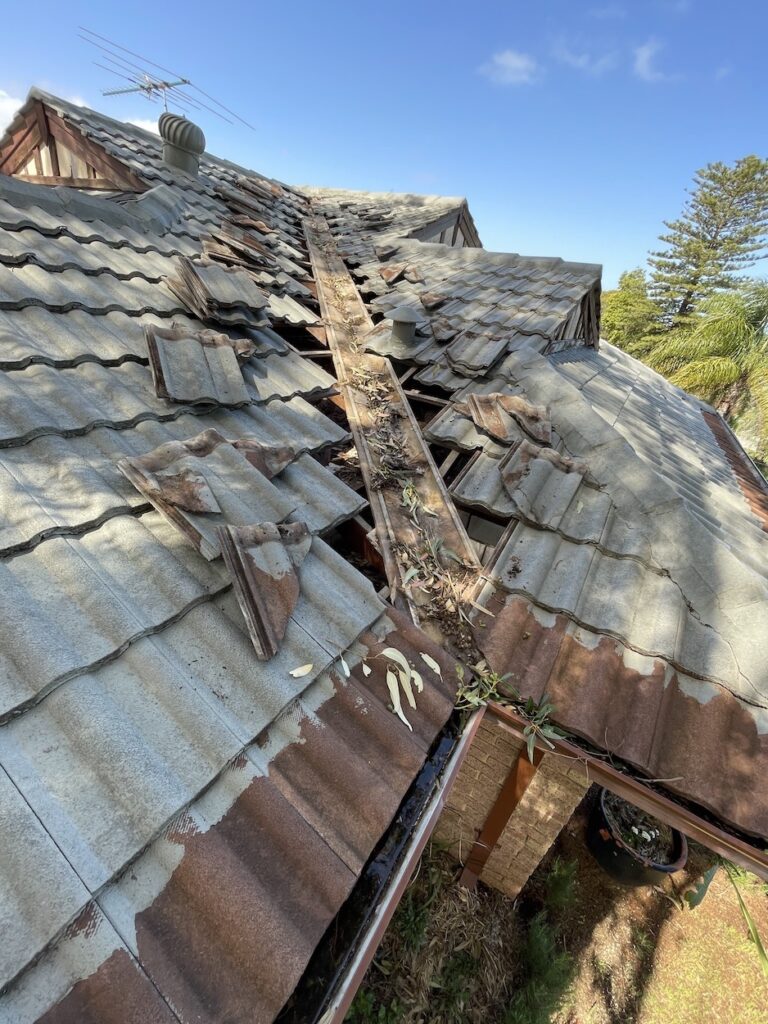
Cleaning and Repairs:
Our roof plumbing inspection revealed that the lips on the valley tray had been flattened, potentially leading to overflow during heavy rain and blockages due to tree debris. To rectify this issue, we re-lipped the valley tray, raised its edges, and securely fastened it in place. Following these repairs, we carefully repositioned all roof tiles and sealed potential water entry points to prevent future leaks.
Gutter Maintenance:
During our roof inspection, we noticed that water was accumulating in the gutter at an unusually high level. Further investigation revealed a blocked downpipe connected to the gutter. We efficiently cleared this blockage using a water hose, ensuring proper water drainage from the gutter.
Eaves and Wall Inspection:
With the roof tiles temporarily removed, we observed water pooling on top of the eaves. This indicated that the gutters had been overflowing onto the eaves, potentially causing power points to malfunction. By clearing the downpipe, we expected to prevent further overflow onto the eaves.
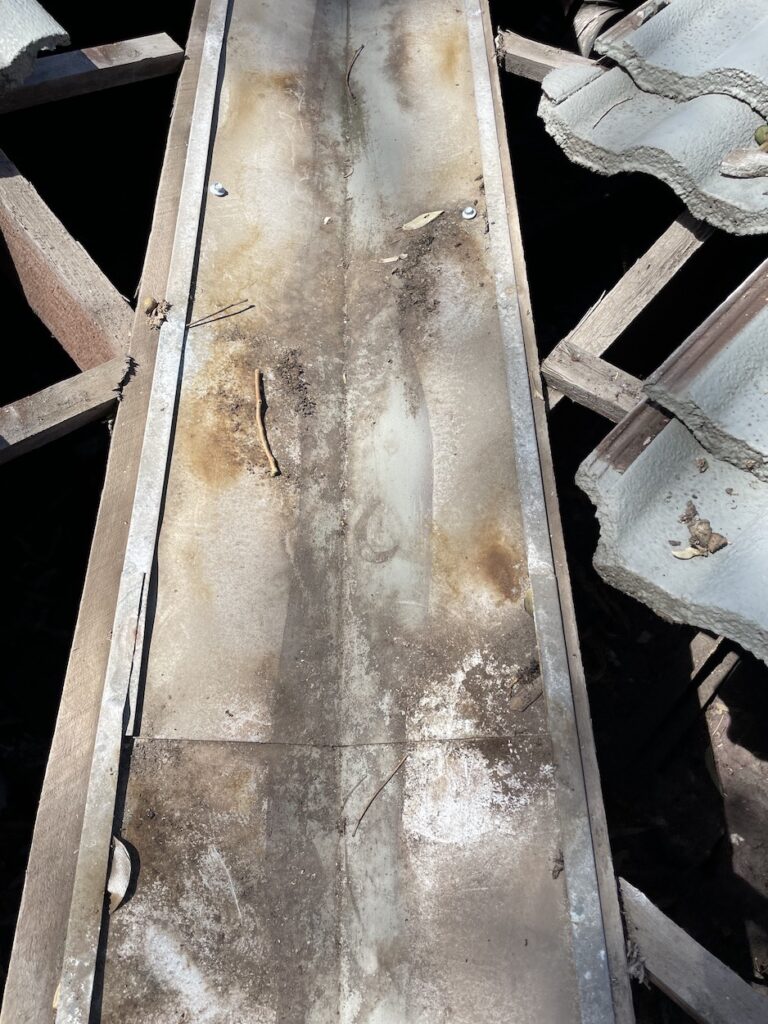
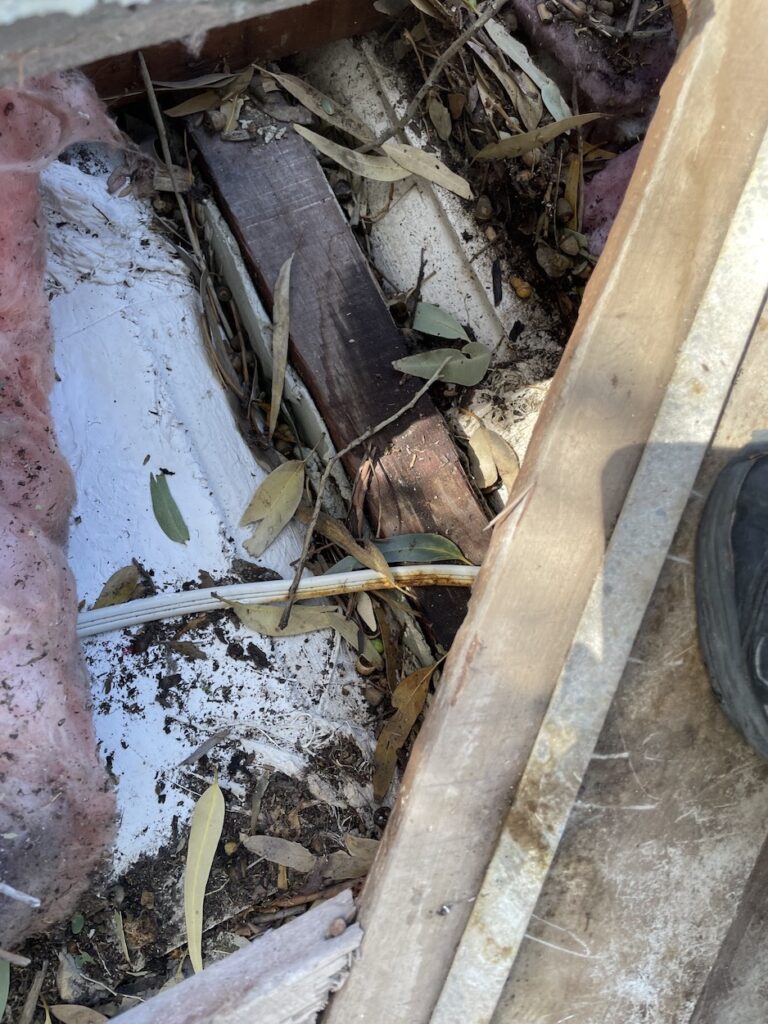
Recommendations:
As part of our service, Plumbing Group WA provided the property owner with the following recommendations:
- Tree Trimming or Gutter Guards: A substantial tree overhung the house, likely contributing to blockages from tree debris. To prevent future blockages and rainwater leaks, we recommended either trimming back the tree branches or installing gutter guards on that side of the house.
Outcome:
The issue has been successfully resolved, and there should be no further rainwater leaks in the affected areas. Additionally, we identified the likely cause of the power points not working and took steps to mitigate this issue.
Plumbing Group WA effectively addressed the rainwater leak issue, showcasing our expertise in plumbing repairs and maintenance. Our swift response and efficient solutions have resolved the problem and safeguarded against future water-related damage. Your emergency is our priority. That’s the Plumbing Group WA guarantee.
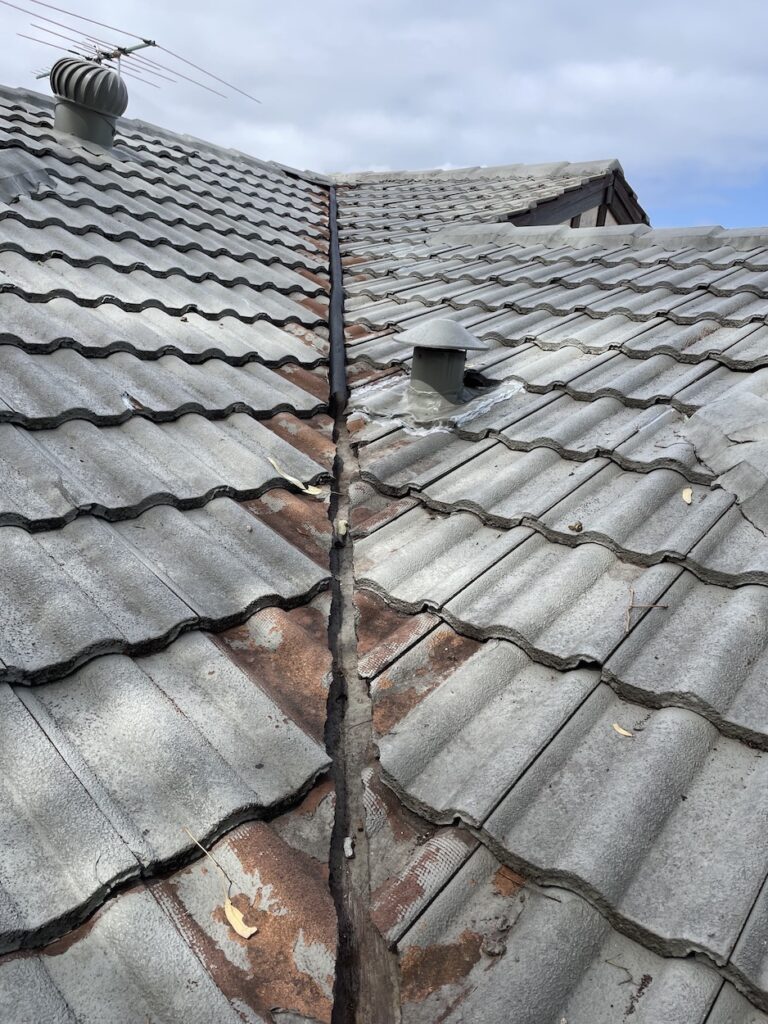
FAQ’s
1. What are the common signs of a rainwater leak in a residential property?
- Answer: Common signs of a rainwater leak include water stains on ceilings or walls, discoloured patches, dampness, and a musty odour. These signs often become more apparent during or after heavy rainfall.
2. Can rainwater leaks lead to structural damage in a property?
- Answer: Yes, rainwater leaks, if left unaddressed, can lead to significant structural damage. Water infiltration can weaken building materials, cause rot, and even compromise the integrity of the property’s foundation. Prompt detection and repairs are crucial to prevent such damage.
3. How can I prevent rainwater leaks in my home?
- Answer: To prevent rainwater leaks, ensure your roof is well-maintained. Regular inspections, cleaning of gutters, and prompt repairs to damaged roofing materials are essential. Additionally, consider installing gutter guards to prevent blockages from debris, which can contribute to leaks during heavy rainfall.
